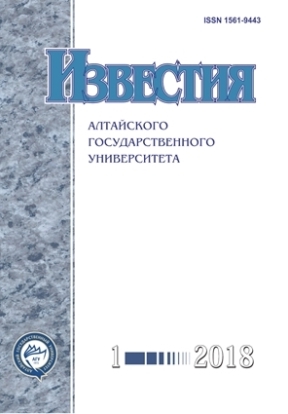Examples of Data Interval Analysis in Process Modeling Problems
Abstract
In this paper, we study the possibilities of applying the theory of interval systems of linear algebraic equations to solve problems of mathematical modeling of processes using experimental data. It is assumed that the simulated process is described by the output variable and a set of input variables with deterministic connections described by a linear equation. During simulation, a theoretical approach is used for initial assumptions about the structure of the model and the boundaries of measurement error intervals for all variables being reliable and not requiring verification of their feasibility by exploratory analysis methods. This formulation of the process modeling problem allows focusing on the study of practical values of the basic sets of solutions of interval systems of linear algebraic equations: combined, tolerated and controlled. For the sake of clarity of the methods and the results obtained, the study is conducted on the specific example of the process with a simultaneous visual analysis of data being carried out.
DOI 10.14258/izvasu(2018)1-20
Downloads
Metrics
References
Канторович Л.В. О некоторых новых подходах к вычислительным методам и обработке наблюдений // Сибирский математический журнал. — 1962. — Т. 3, № 5.
Шарый С.П. Решение интервальной линейной задачи о допусках // Автоматика и телемеханика. — 2004. — № 10.
Шарый С.П. Конечномерный интервальный анализ. — Новосибирск, 2017.
Оскорбин Н.М., Жилин С.И., Максимов А.В. Построение и анализ эмпирических зависимостей методом центра неопределенности // Изв. Алт. гос. ун-та. — 1998. — № 1.
Жолен Л. Прикладной интервальный анализ. — М. ; Ижевск, 2005.
Шарый С.П. Сильная согласованность в задаче восстановления зависимостей при интервальной неопределенности данных // Вычислительные технологии. — 2017. — Т. 22, № 2.
Максимов А.В., Оскорбин Н.М. Многопользовательские информационные системы: основы теории и методы исследования. — 2-е изд. испр. и доп. — Барнаул, 2013.
Носков С.И. Технология моделирования объектов с нестабильным функционированием и неопределенностью в данных. — Иркутск, 1996.
Поляк Б.Т., Назин С.А. Оценивание параметров в линейных многомерных системах с интервальной неопределенностью // Проблемы управления и информатики. — 2006. — № 1.
Zhilin S.I. Simple method for outlier detection in ztting experimental data under interval error // Chemometrics and Intellectual Laboratory Systems. — 2007. — Vol. 88. — No. 1.
Milanese M., Norton J., Piet-Lahanier H., Walter E. Bounding Approaches to System IdentiOcation(Eds). — New York, 1996.
Copyright (c) 2018 М.Н. Мадияров, Н.М. Оскорбин, С.И. Суханов

This work is licensed under a Creative Commons Attribution 4.0 International License.
Izvestiya of Altai State University is a golden publisher, as we allow self-archiving, but most importantly we are fully transparent about your rights.
Authors may present and discuss their findings ahead of publication: at biological or scientific conferences, on preprint servers, in public databases, and in blogs, wikis, tweets, and other informal communication channels.
Izvestiya of Altai State University allows authors to deposit manuscripts (currently under review or those for intended submission to Izvestiya of Altai State University) in non-commercial, pre-print servers such as ArXiv.
Authors who publish with this journal agree to the following terms:
- Authors retain copyright and grant the journal right of first publication with the work simultaneously licensed under a Creative Commons Attribution License (CC BY 4.0) that allows others to share the work with an acknowledgement of the work's authorship and initial publication in this journal.
- Authors are able to enter into separate, additional contractual arrangements for the non-exclusive distribution of the journal's published version of the work (e.g., post it to an institutional repository or publish it in a book), with an acknowledgement of its initial publication in this journal.
- Authors are permitted and encouraged to post their work online (e.g., in institutional repositories or on their website) prior to and during the submission process, as it can lead to productive exchanges, as well as earlier and greater citation of published work (See The Effect of Open Access).








